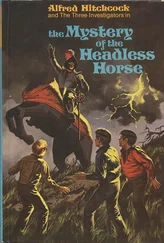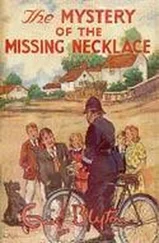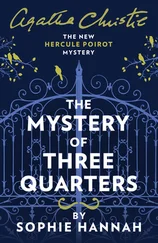1 ...6 7 8 10 11 12 ...19 Thirdly there is a bison’s head ( see overleaf ), full of gravitas, sculpted from clay, from around 15,000 BC, that would be a masterpiece in any age. One can hardly imagine that it was created 14,500 years before the Golden Age of sculpture of classical Athens. Indeed, when compared to the sculpted head of an ox being led in sacrificial procession on the Parthenon frieze, one could almost be forgiven for thinking they were rendered by the same hand.
So there we have it, three artistic masterpieces, each of which conveys something of the profundity of the mind of these first representatives of our species, their humour and pathos, and their deep appreciation of the character of the animals with which they shared the world and which they so masterfully portrayed.
For the archaeologists of the nineteenth century, few things were quite as perplexing as the possibility that these wonderful expressions of human intelligence could have been created by Stone Age cave dwellers. It seemed inconceivable that man could have been capable of such artistic virtuosity in so distant a past, so when the Marquis de Sautola stumbled across the first of the painted caves at Altamira in northern Spain – after his eight-year-old daughter drew his attention to a parade of bison on the ceiling with the famous phrase ‘ Mira, Papa, bueyez! ’ (Look, Papa, oxen!’) – no one believed him. His lecture to the International Congress of Archaeology in Lisbon in 1880 in which he described his findings was ‘met with incredulity and an abrupt and contemptuous dismissal’. The Altamira paintings were never acknowledged as authentic in his lifetime – rather, their exceptional quality was presumptive evidence that he must have faked them. The Marquis died a disillusioned man, yet any condemnation of his harsh treatment by his archaeological contemporaries is a judgement of hindsight. Their scepticism was not unreasonable, given that the proposition that Stone Age man might have been capable of creating such great art itself seemed unreasonable.
Nowadays we know better. The sensational recent discoveries of man’s earliest ancestors – in particular the two near-complete fossilised skeletons, ‘Lucy’ and ‘Turkana Boy’ – mark the first two distinct stages of Man’s Ascent, his decision to stand upright and his prodigiously enlarging brain . The ‘cultural explosion’ of Cromagnon man’s artistic achievement marks the culminating phase of that evolutionary trajectory, determined by the third of those distinctly human attributes – the faculty of language . And yet, the drama of that evolutionary trajectory now appears, in the light of the findings of the New Genetics and the Decade of the Brain, more perplexing even than it would have seemed to those sceptical nineteenth-century archaeologists. This is ‘the riddle of the ascent of man’.
The common understandingof man’s evolutionary heritage begins with Charles Darwin’s On the Origin of Species of 1859, extended to incorporate ‘ourselves’ in The Descent of Man, published twelve years later, with its central claim that the near-infinite diversity of shape, form and attributes of living things all evolved from the first and simplest form of life, self-assembled from ‘all sorts of ammonia and phosphoric salts’ in ‘some warm little pond’ on the earth’s surface several billion years ago. The modern interpretation of Darwin’s theory is, briefly, as follows. The major determinants of what makes a fish a fish, or a bird a bird, are the instructions carried within the twenty thousand (plus or minus) genes formed by the sequence of just four chemicals (best imagined, as suggested, as four coloured discs, green, red, blue and yellow) strung out along the Double Helix within the nucleus of each and every cell. These genetic instructions are then passed on in the sperm and egg at the moment of conception to ensure that the offspring of fish will be fish and birds, birds. Those individual genes replicate themselves with astonishing accuracy every time the cell divides, but very occasionally a mistake, or ‘mutation’, may creep in: so a green disc (say) is substituted for a red one, thus subtly altering the genetic instructions. Most of the time this does not matter, or is detrimental, but very occasionally the ‘chance mutation’ in those genetic instructions may confer some biological advantage, maximising the carriers’ chances of survival in the struggle for existence. Their offspring in turn are likely to inherit their parent’s advantageous genetic variation, and as the process continues from generation to generation, the characteristics of species will be gradually transformed, step by step, in favour of those which are best suite d (or ‘adapted’) to their environment. Thus fish are adapted to life underwater because over millions of generations ‘nature’ has ‘selected’ (hence ‘natural selection’) those whose random changes in their genes have maximised their swimming potential, while birds are good at flying because the same process has maximised their aerodynamic capabilities. Put another way, all of life has ‘descended with modification’ from that common ancestor.
And man, Darwin argued in The Descent of Man, is no exception. Indeed, there is probably no more persuasive evidence for his evolutionary theory than the striking physical similarities between man and his primate cousins, which point inexorably to their having ‘descended by modification’ from some common ape-like ancestor. Man has survived and prospered because nature, in ‘selecting’ the genetic mutations that would cause him to stand upright and acquire that much larger brain, conferred so considerable a biological advantage as to maximise his chances of survival. Certainly man’s much superior intellectual faculties might seem to set him apart. Nonetheless, our primate cousins, like ourselves, exhibit similar emotions of jealousy, suspicion and gratitude; they make choices, recall past events and are capable (to a degree) of reason. Hence the superiority of the human mind, Darwin argued, represents a continuum – it is a difference of ‘degree but not of kind’.
Details aside, one single, powerful imagecaptures this profoundly influential interpretation of man’s origins. Darwin’s close friend and advocate Thomas Huxley, in an illustration to his book Evidence as to Man’s Place in Nature (1863), placed the skeletons of chimpanzees, gorillas and man in sequence, transforming their striking physical similarities into a powerful narrative of the rise of man from knuckle-walking chimp to upstanding Homo sapiens . The same image, expanded with a series of ‘hominid’ intermediaries, and reproduced (often humorously) in numerous different guises, would become one of the most familiar, and certainly influential, icons of the twentieth century. The ‘Descent’ of man by modification from his ape-like ancestors, it implied, was in reality the story of his ‘Ascent’ to his pre-eminent position in the grand order of life. And so the major archaeological discoveriesof the last fifty years have shown it to be.
The discovery of the fossilised bones of Cromagnon man in 1868, together with those of his beetle-browed Neanderthal predecessors, would roll back man’s evolutionary history 200,000 years or more. It was not however till the 1930s that the first evidence of the more distant stages would begin to emerge, and not till the 1970s, when the first of two near-complete fossilised skeletons was unearthed in the harsh landscape of central Africa, that Darwin’s hypothesised transition from that ape-like common ancestor to Homo sapiens would be vindicated.
Those two near-complete skeletons were, first, the three-and-a-half-million-year-old ‘Lucy’, or Australopithecus afarensis to give her her scientific name, whose discovery had such a powerful and emotional effect on Donald Johanson and Tom Gray (‘…we hugged each other, sweaty and smelly, howling and hugging in the heat-shimmering gravel’), as already described. One set of fossilised remains can look remarkably like another, but the vital clue, and the source of their exhilaration, lies in the sharp upward angle of the head of the femur, or upper thigh bone, that locates the centre of gravity of the human skeleton in the small area enclosed by two feet placed together – confirming that Lucy was the first of our most distant ancestors to stand upright.
Читать дальше












